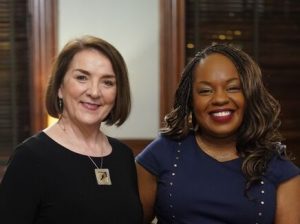How and Why DEIAB?
The vast majority of the attacks on diversity, equity, inclusion, access, and belonging (DEIAB) initiatives and programs, use anecdotal examples of poorly executed workshops or other strategies to dissemble and discredit the entire field and its raison d’etre. This is an old (see ancient Greece) and frequently effective technique for destroying one’s political nemeses. The mountains of data that we haul out to prove the efficacy of competently implemented DEIAB initiatives is not going to be examined by those who are the intended audience of these smear campaigns, as they do not read the same periodicals, follow the same influencers, or travel in the same circles that DEIAB experts do, that is the point of these tactics—do not worry about being asked for the receipts—make the slanderous statement and wait for the spiral of mis and disinformation to do its work.
Why DEIAB?
Before I embark on how to counter this onslaught, let’s examine why it matters. There have been many studies[1] during the past few decades that establish the following DEIAB benefits: diversity makes us better, better workers, thinkers, writers, people; equity not only affirms our commitment to a democratic society, but helps us to understand what the rules of engagement are which in turn, helps us to navigate our relationships and roles; inclusion, especially for so many humans who have historically been excluded as a result of bias, creates a safe, nurturing environment where we can bring and be our best selves—productive and innovative; access is necessary for all humans to fully participate via a ramp for wheelchairs or closed-captioning during a zoom meeting; and belonging, inspires us to want to be somewhere—be fully engaged and giving 100%.
Now, nothing that really matters is easy. Nothing that really makes a difference is ‘one and done.’ [think: diet and exercise – sorry!] For many years I have been telling potential clients that we do not do training—we provide interactive education on the cause and effect of DEIAB. For example, we might examine the history of sexism and its ongoing impact on society or the impact of racism and its perpetual institutionalization in organizations. Then, we can work on developing ways to counter these systemic problems.
How: Listen.
The reason that we conduct surveys, interviews and focus groups or listening sessions, as well as reviewing a clients’ policies, protocols, and various communications (including job descriptions and marketing materials), is that we need to know where to begin. Every organization has a unique culture and subcultures based on its mission, vision, goals, and strategies. If you listen, the members of your organization will tell you what matters to them, how they are being treated, and if they feel included. You do need to listen on a regular basis, so that you can notice shifts, hints, and indicators of problems before they escalate. That means conducting assessments at least on a biennial basis.
How: Discern.
Once you have this very valuable information, you have to decide what it is you will do with it. If nothing, then stop here. If, on the other hand, you believe that knowledge is power, the power to change say your diet based on a diagnosis of diabetes, then, let’s get to work. That diet will need to be customized and long term. What are you able to commit to? What resources do you have? What resources do you need? What are your limitations? Board approval, budget restrictions, political pressure? Those limitations need to be identified before they can be addressed.
How: Communicate.
Share the results of your assessment with your employees. Follow that basic communication rule and share what you heard to make sure that you got it right. Many employers have told me that they are not comfortable sharing the results of a DEIAB assessment with employees because that information might be shared with the public and result in a negative perception about the organization. If a person has cancer but does not have a diagnostic assessment conducted to determine if they have cancer, does the cancer cease to exist? No. Also, if your organization has problems with DEIAB a fair percentage of your employees already know that. They just may be uncomfortable to tell you to your face. So, share your DEIAB assessment results and discuss what those results indicate. What caused the negative outcomes in the first place.
How: Educate.
Use the knowledge that you gained during your assessment to determine what competency and skill gaps exist—especially with your leadership and managerial staff. My observation is that the majority of leaders and managers in organizations have not developed critical—fundamental leadership skills. These gaps exacerbate DEIAB challenges because a lack of cultural awareness on top of poor communication and delegation skills create environments that, at least diminish engagement, productivity, and staff longevity, and at worst, result in hostile work environments and potential EEO violations. A 3-hour online seminar on effective management is a waste of money and time. Invest in education. Every manager and leader should participate in ongoing, long term development as well as coaching, and team feedback such as 360 assessments and reciprocal performance evaluations.
We customize our leadership and manager educational programs to meet organizations and individuals where they are. We conduct preparatory surveys to find out what education and training individuals have had and what their response to those experiences is. We also use those surveys to find out what their particular challenges and concerns are surrounding DEIAB. This enables us to fine tune our educational programs so that they are effective and relevant. Separating leaders, managers, and non-managerial staff is an important part of creating a safe space where participants can speak freely, share concerns, and learn from their peers. By using an anonymizing tool during sessions we help participants to safely address these issues and engage in meaningful discussions without fear of judgment or repercussions.
How: Prioritize.
Using the feedback gathered during our sessions, we are able to help clients develop sustainable, tangible DEIAB strategies in a collaborative manner. These strategies must be part of the organizational strategic plan, core mission, vision, values, and goals—not an add on. It is easy to criticize initiatives that get second thoughts and leftovers in terms of resources, whether financial or human. So, if DEIAB is a priority, treat it as such.
If an organization is committed to DEIAB, then, you need to put your money where your mouth is. People, your employees, clients, customers, constituents, and community members know the difference between talk and action. The level of disillusionment[2] that is, in part a response to a lack of trust in what leaders communicate versus what they do, is contributing to high employee turnover rates[3] during the past several years as well as quiet quitting[4] and general disengagement.
The most effective DEIAB strategies are also reasonable financial investments for organizations. Our most successful clients have ongoing structured mentoring programs which contribute to more inclusive working relationships, more effective managers and leaders and increased employee engagement and retention.
Investing in education, employee mentoring, ongoing assessments, and strategic planning are not new approaches to DEIAB, I have been preaching and practicing these for many years. It is the integration of these actions that create a resilient and pivotal foundation that can withstand the onslaught of voguish attacks on DEIAB when they pop up.
If your organization is struggling to balance the benefits of DEAIB and your core values against the politicized myths being used in an attempt to polarize people and diminish those values, please give me a call. I would love to discuss how we can support you during these very challenging times.
Onward!
~ Wendy
May 09, 2024
Wendy Amengual Wark
(She/Her)
Founding Partner
Inclusion Strategy Solutions LLC
01-347-880-0777
InclusionStrategy.com
Wendy@InclusionStrategy.com
[1] Standing firm against the escalating assault on equity, diversity, and inclusion https://www.apa.org/topics/equity-diversity-inclusion/standing-against-assault-equity-diversity-inclusion
[2] UN General Assembly “As ‘Intense Frustration and Disillusionment’ Brew amid Raging Global Conflict, Economic Uncertainty, Revitalizing General Assembly is Increasingly Critical, President Says” https://press.un.org/en/2023/ga12560.doc.htm
The ‘Caudillo Syndrome’ is spreading around the world as economic disillusionment pushes voters to bet on populist strongmen https://fortune.com/2024/02/28/caudillo-syndrome-spreading-world-economic-disillusionment-voters-bet-on-populist-strongmen-politics/
Despair makes young US men more conservative ahead of US election, poll shows
https://www.reuters.com/world/us/despair-makes-young-us-men-more-conservative-ahead-us-election-poll-shows-2024-04-12/
[3] U.S. Bureau of Labor Statistics: JOB OPENINGS AND LABOR TURNOVER – MARCH 2024 https://www.bls.gov/news.release/pdf/jolts.pdf
[4] Forget ‘Quiet Quitting’. In 2024 Employees Want Employers To ‘Quietly Manage’
https://www.forbes.com/sites/bryanrobinson/2023/12/14/forget-quiet-quitting-in-2024-employees-want-employers-to-quietly-manage/?sh=7563c7876523




